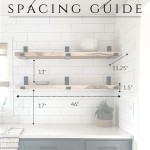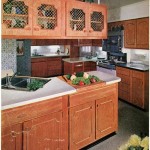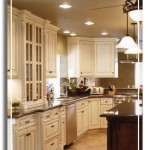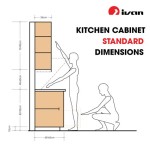Kitchen Designer Job Description: A Comprehensive Overview
The role of a Kitchen Designer is multifaceted, requiring a blend of creative vision, technical proficiency, and strong communication skills. This professional is responsible for transforming spaces into functional and aesthetically pleasing kitchens, tailoring designs to meet the specific needs and desires of clients while adhering to industry standards and safety regulations. The scope of this position extends beyond mere decoration, encompassing space planning, material selection, budgeting, project management, and client relationship management. A successful Kitchen Designer possesses a deep understanding of kitchen design principles, construction practices, and the latest trends in the industry.
This article provides a comprehensive overview of the key responsibilities, qualifications, and skills associated with the Kitchen Designer job description. It aims to clarify the expectations and requirements of this role for both potential candidates and hiring managers, outlining the essential elements that contribute to success in this dynamic and demanding field.
Key Responsibilities of a Kitchen Designer
The responsibilities of a Kitchen Designer are diverse and span various stages of the design process, from initial client consultation to project completion. These responsibilities can be broadly categorized into design development, project management, and client interaction.
Design Development: This phase involves a thorough understanding of the client's needs and preferences. The designer conducts initial consultations to gather information about the client's lifestyle, budget, aesthetic tastes, and any specific requirements for the kitchen space. This information is then translated into design concepts, taking into account the existing architectural constraints and opportunities. The designer develops detailed floor plans, elevations, and 3D renderings to visualize the proposed design. This includes specifying cabinet layouts, appliance placement, countertop materials, and lighting schemes. The designer must be proficient in using design software such as AutoCAD, SketchUp, or 2020 Design to create accurate and visually appealing representations of the kitchen design.
The design development phase also encompasses the selection of materials and finishes. The designer researches and presents a range of options to the client, considering factors such as durability, aesthetics, and cost. This may involve sourcing samples of cabinets, countertops, tiles, and hardware. The designer must stay informed about the latest trends and innovations in kitchen design, including sustainable materials and energy-efficient appliances.
Project Management: Once the design is approved, the Kitchen Designer plays a crucial role in project management. This involves coordinating with contractors, suppliers, and installers to ensure that the project is completed on time and within budget. The designer prepares detailed specifications and purchase orders for all materials and equipment. They oversee the ordering process and track deliveries to ensure that materials arrive on schedule. The designer also monitors the installation process, addressing any issues or discrepancies that may arise. Effective project management skills are essential to minimize delays and cost overruns.
Budget management is a critical aspect of project management. The Kitchen Designer develops a detailed budget that outlines all project costs, including materials, labor, and permits. They track expenses throughout the project and make adjustments as needed to stay within budget. This requires strong negotiation skills and the ability to find cost-effective solutions without compromising the quality of the design.
Client Interaction: Maintaining strong client relationships is paramount for a successful Kitchen Designer. This involves clear and consistent communication throughout the design and construction process. The designer regularly updates the client on the project's progress and addresses any concerns or questions they may have. This requires excellent interpersonal skills and the ability to build trust and rapport with clients. The designer acts as a liaison between the client and other stakeholders, such as contractors and suppliers, ensuring that everyone is on the same page.
The Kitchen Designer also provides ongoing support to the client after the project is completed. This may involve addressing any warranty claims or providing guidance on the proper care and maintenance of the kitchen. Building long-term relationships with clients can lead to repeat business and referrals, which are essential for growing a successful design practice.
Essential Qualifications and Skills
To excel as a Kitchen Designer, a combination of education, experience, and technical skills is required. While the specific requirements may vary depending on the employer and the complexity of the projects, certain qualifications and skills are consistently sought after.
Education and Experience: A bachelor's degree in interior design, architecture, or a related field is often preferred, but not always required. Some employers may consider candidates with an associate's degree or a certificate in kitchen and bath design, especially if they have significant experience in the field. Practical experience is highly valued, with many employers seeking candidates who have worked as an assistant designer or held other relevant positions in the design industry. Certification from organizations such as the National Kitchen and Bath Association (NKBA) can demonstrate a commitment to professional development and expertise in the field.
Technical Skills: Proficiency in design software is essential. Kitchen Designers must be able to use CAD programs to create detailed floor plans, elevations, and construction documents. Experience with 3D rendering software is also highly desirable, as it allows clients to visualize the finished kitchen. Familiarity with building codes and regulations is crucial to ensure that designs comply with safety standards. A strong understanding of construction practices and materials is also necessary to create designs that are both functional and aesthetically pleasing.
Soft Skills: In addition to technical skills, Kitchen Designers must possess strong soft skills. Excellent communication skills are essential for interacting with clients, contractors, and suppliers. The ability to listen actively and understand the client's needs is critical for creating successful designs. Problem-solving skills are also important, as designers often encounter unexpected challenges during the design and construction process. Time management skills are necessary to manage multiple projects simultaneously and meet deadlines. Finally, creativity and a strong sense of aesthetics are essential for creating innovative and visually appealing kitchen designs.
The Importance of Staying Current with Industry Trends
The kitchen design industry is constantly evolving, with new materials, technologies, and design trends emerging regularly. A successful Kitchen Designer must stay current with these changes to provide clients with the best possible solutions. This involves attending industry trade shows and conferences, reading design publications, and participating in continuing education programs.
Staying informed about new materials and technologies is essential for creating innovative and sustainable designs. This includes exploring options such as eco-friendly cabinets, energy-efficient appliances, and smart home integration systems. By incorporating these elements into their designs, Kitchen Designers can help clients create kitchens that are both functional and environmentally responsible.
Keeping up with design trends is also important for creating kitchens that are aesthetically pleasing and reflect the client's personal style. This involves following design blogs and social media accounts, as well as visiting design showrooms and model homes. By understanding the latest trends, Kitchen Designers can offer clients a range of options and help them create kitchens that are both timeless and contemporary.
Continuing education is crucial for maintaining professional competence and staying abreast of industry changes. The NKBA and other organizations offer a variety of courses and certifications that can help Kitchen Designers enhance their skills and knowledge. These programs cover topics such as design principles, construction practices, and business management. By investing in continuing education, Kitchen Designers can demonstrate their commitment to professional excellence and provide clients with the highest level of service.
In conclusion, the Kitchen Designer role demands a unique combination of artistic talent, technical expertise, and interpersonal skills. The ability to translate client visions into functional and beautiful spaces, while managing projects effectively and staying current with industry trends, is essential for success in this dynamic field. By understanding the key responsibilities, qualifications, and skills outlined in this article, both aspiring designers and hiring managers can gain a clearer understanding of what it takes to thrive as a Kitchen Designer.

Kitchen Designer Job Description Velvet Jobs

Kitchen Designer Job Description Construct Ed Inc

Kitchen Designer Job Description Sample Template

10 Kitchen Designer Resume Samples Templates For 2025

Kitchen Designer Cv Job Description Sample Guide

Kitchen Designers What They Do

Kitchen Designer Job Description

Kitchen Designer Job Description Construct Ed Inc

Kitchen Designer فيلينتس

1 Kitchen Designer Resume Examples For 2025 Zippia
Related Posts








